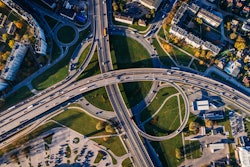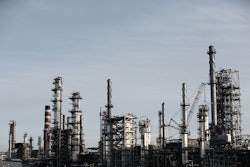
Now more than ever, supply chain management and geo-location are an ideal match. When geo-location services and capabilities are deployed, companies can optimize their transportation routes, track assets, identify bottlenecks and gain a better understanding of how and where their assets are going.
Currently many supply chains have been deeply impacted by the Coronavirus disease (COVID-19) virus and the resulting shelter-in-place orders. Non-essential businesses have been shut down, and many factories and warehouses are no longer able to operate or are limited to fewer staff and resources. To continue to produce products and meet demand, an effective and informed supply chain is incredibly important. Companies need to understand the impacts of certain links in the chain that will affect operations and decide route changes, operation schedules, and manufacturing capabilities. Location technology and data helps businesses gain visibility into how the current situation has influenced their supply chain and what changes could maximize efficiency. Geo-location provides a holistic look at the supply chain.
Benefits of geo-location in the supply chain
An effective and efficient supply chain is constantly thinking about maximizing customer value and achieving a sustainable competitive advantage. Location services can greatly improve worker protection and the flow of goods and services at many levels of the supply chain. In addition, many businesses that have operated in the supply chain visibility space for decades are now aggressively migrating from offline data collection and analysis products to nearly all real time.
On-the-road asset tracking
Two essential parts of the supply chain are the drivers and the trucks that transport the products. These trucks are transporting raw materials or products to the next step of the chain, in which case hybrid location can access real-time, accurate location information about the route, speed, and product, without being affected by tunnels or bridges. Geo-location can also provide important information to companies about delivery and logistics, and their return system for unwanted goods, allowing them to optimize their supply chain. When something like the current virus is a factor, the ability to analyze location information is very important when deciding if the supply chain can still function normally and effectively.
Wearable safety devices
Supply chains begin with the delivery of raw materials from a manufacturer or supplier and rely on delivery workers to safely and efficiently get those materials transported. Each supply chain will vary greatly based on the product or service being created and the aspects of the supply chain. The raw materials may be coming from a factory, field or site where worker safety is a concern. Wearable personal safety devices such as a watch or keychain improve remote worker welfare at the beginning of the supply chain by providing a quick way to call for help if and when needed. These devices can also alert if employees are determined to be in a dangerous or overly congested area. The capability to provide and report locations, even in remote areas or factories, ensures that workers are able to do their job in the safest way possible.
Indoor location in warehouses
Supplies are often stored in a warehouse or manufactured in a large factory. These buildings can be miles long, and a high functioning warehouse or factory needs to understand how much product they have, where it is located in the building, and how to quickly access it when needed. With many people working at these warehouses, finding where someone may have stored a specific product, tool, or material can be challenging, and the option of searching an entire 3-mile warehouse just isn’t a smart use of time. With indoor positioning capabilities on trackers that can attach to pallets, products, forklifts, and more, warehouses remain organized and managers can quickly take inventory and get product on the road as needed.
Data analysis and improving business
Location services can help companies track, filter, and add context to the location data from their assets for use in predictive analytics, supply chain optimization or location-based market research. Location based insights are in many cases being used to determine worker efficiencies as well as supply chain efficiencies. Location can inform businesses if workers are in their designated working area, arrival time, the hours spent at a work site and gaps in site coverage. Understanding movement patterns can prepare businesses to accurately predict impacts of crisis on their flow of goods and services.
An effective supply chain is an efficient supply chain, and geo-location - in many different applications - can greatly assist in keeping supply chains moving smoothly during challenging times and beyond.
Click here to hear more about location in the supply chain:




















